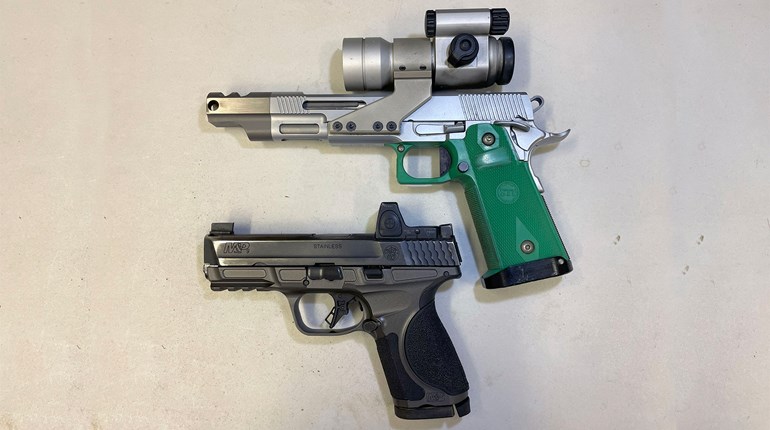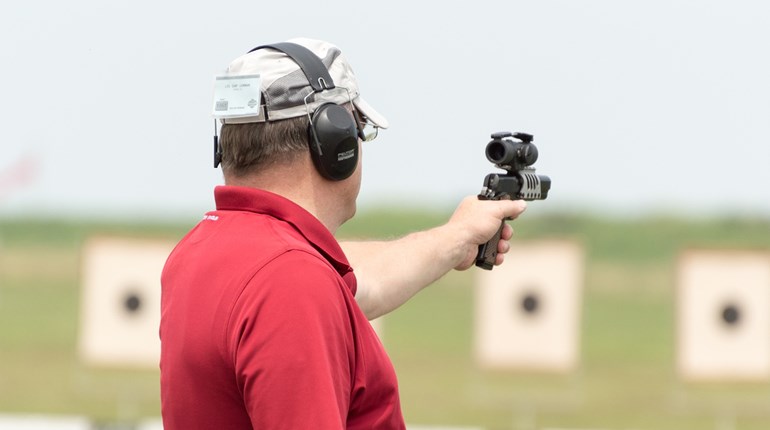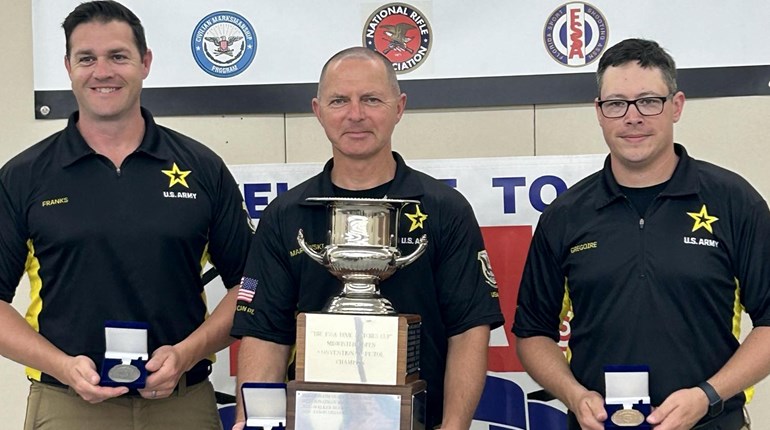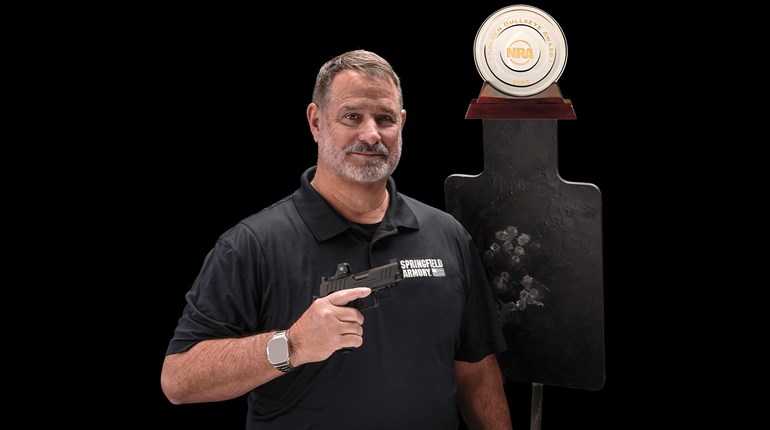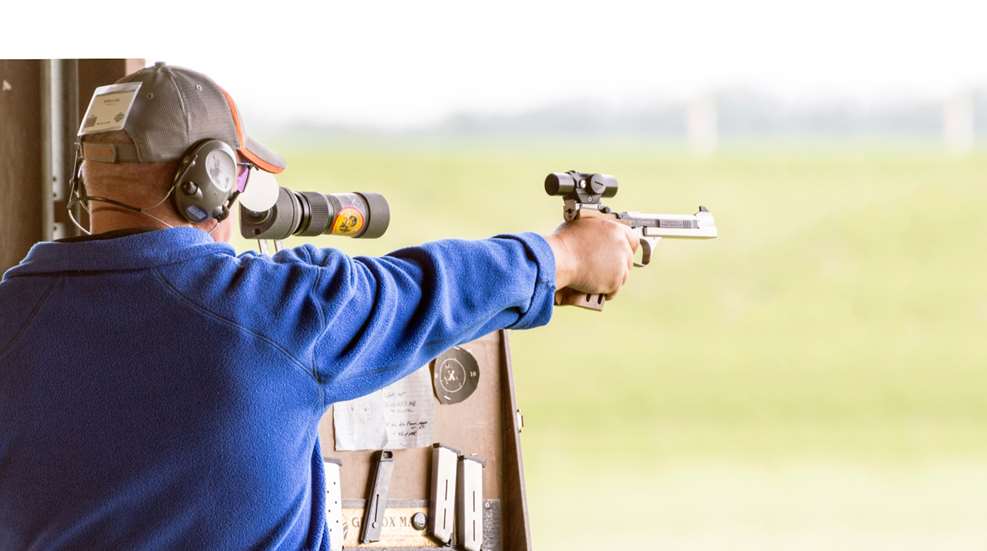
Editor’s Note: In his latest article for SSUSA, 12-time NRA National Pistol Champion Brian Zins shares his thoughts on aiming the red dot and anticipation in Precision Pistol competition. Read Part I here.
Aiming the red dot
Before I get into my theories on looking at the target or the dot (not iron sights), let me share an observation—many shooters think entirely too much. This is not rocket science, because if it were, I would not be a shooter. Hence, I am not smart enough to shoot badly. When Erich Bujung was the Olympic Pistol Team coach, he always said, “No stinking thinking. The mind is a terrible thing to waste and in Bullseye on the firing line, the mind is just a terrible thing.”
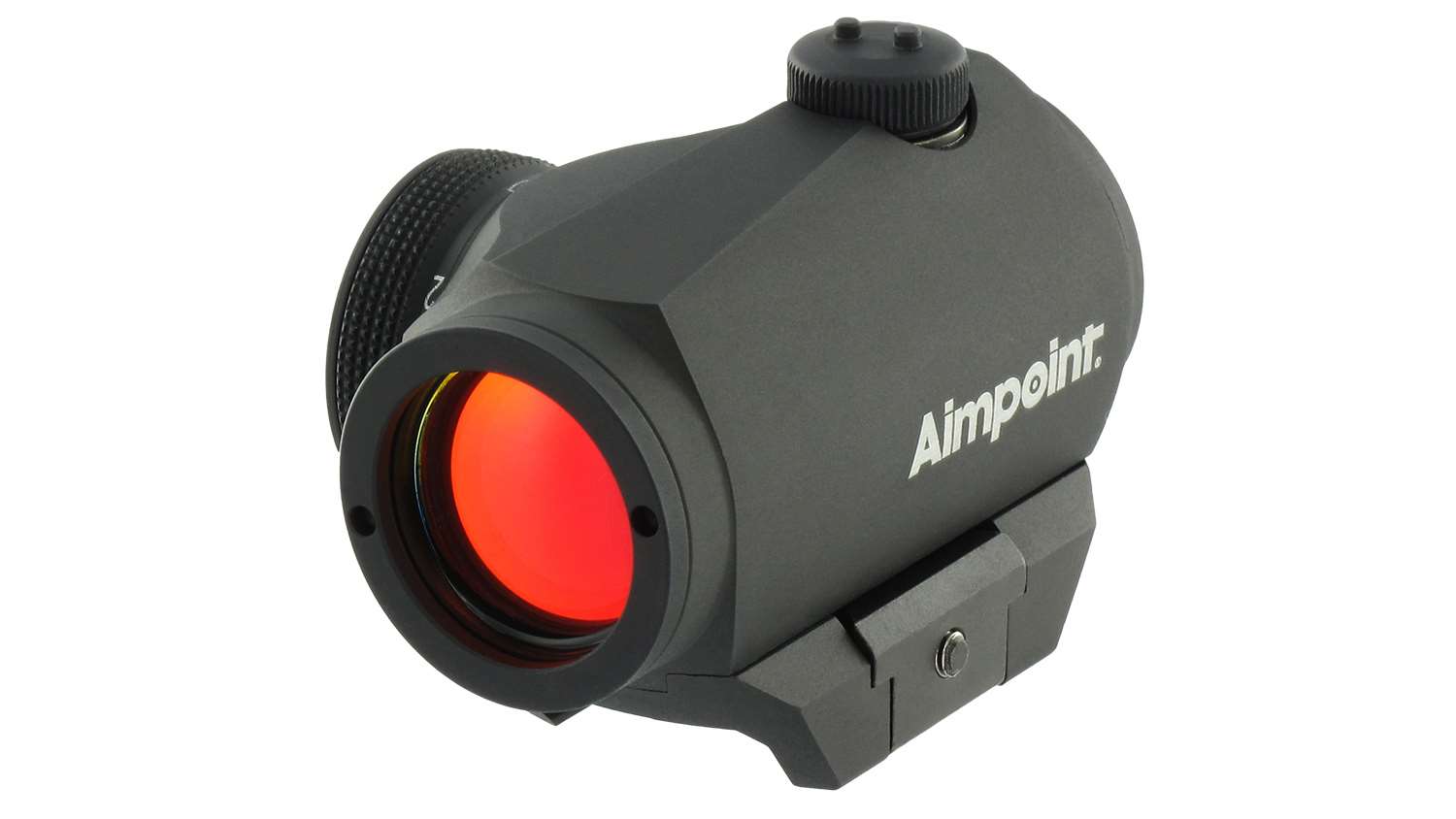
Thus, I submit to you another way of accomplishing the goal of shooting better. I learned to shoot under the guidelines that legends such as Don Nygord and the late Bill Blankenship wrote about. I learned from some of the greatest marksmanship instructors the U.S. Marine Corps had to offer. I can take only partial claim to the ideas presented here, as it was a collaborative effort of Andy Moody, Mitch Reed, Mario Lozoya, Chris Hill and myself.
Our goal was to get Marines to shoot a 2600 as fast as possible because unlike the Army, the Marines do not get the luxury of staying on the Team for life. Therefore, we came up with ideas to get Marines to shoot better and faster.
I use an Aimpoint Micro with a 2 MOA dot, not the match four dot, though that is an awesome scope and recommend it for anyone with failing vision. On a bright day my dot level is on about an eight, in order to have a small dot. Additionally, with a dot I am not a big advocate of the iris on my shooting glasses but with iron sights, that’s okay.
I am sure at some point or another you have thrown a ball to someone, right? When you threw the ball, what were you looking at? The ball, or the person or object you were throwing at?
Let me explain. With iron sights, three items come into play. Front sight, rear sight and the target or aiming area. However, with the dot you have but two items in play. The DOT and the target. Before I forget, I do understand the difference between sight alignment and sight picture.
Target vs. sight
When I began shooting, Andy Moody and I were talking about looking at the target vs. looking at the sight. I was young and didn’t know any better so I tried it. Keep in mind this was my first year as a bullseye shooter. I then proceeded to shoot my first ever 100 long-line with my .22LR. Heck, it was my first 100 long-line period. The team captain called everyone into a circle and asked me to tell them what I did during that string and if I learned something. I told him I turned my dot down and looked at the target as opposed to the front sight. He about had a fit, but some learning had occurred, and not just for me. From that moment on, it became not so uncommon for Marines to look at the target.
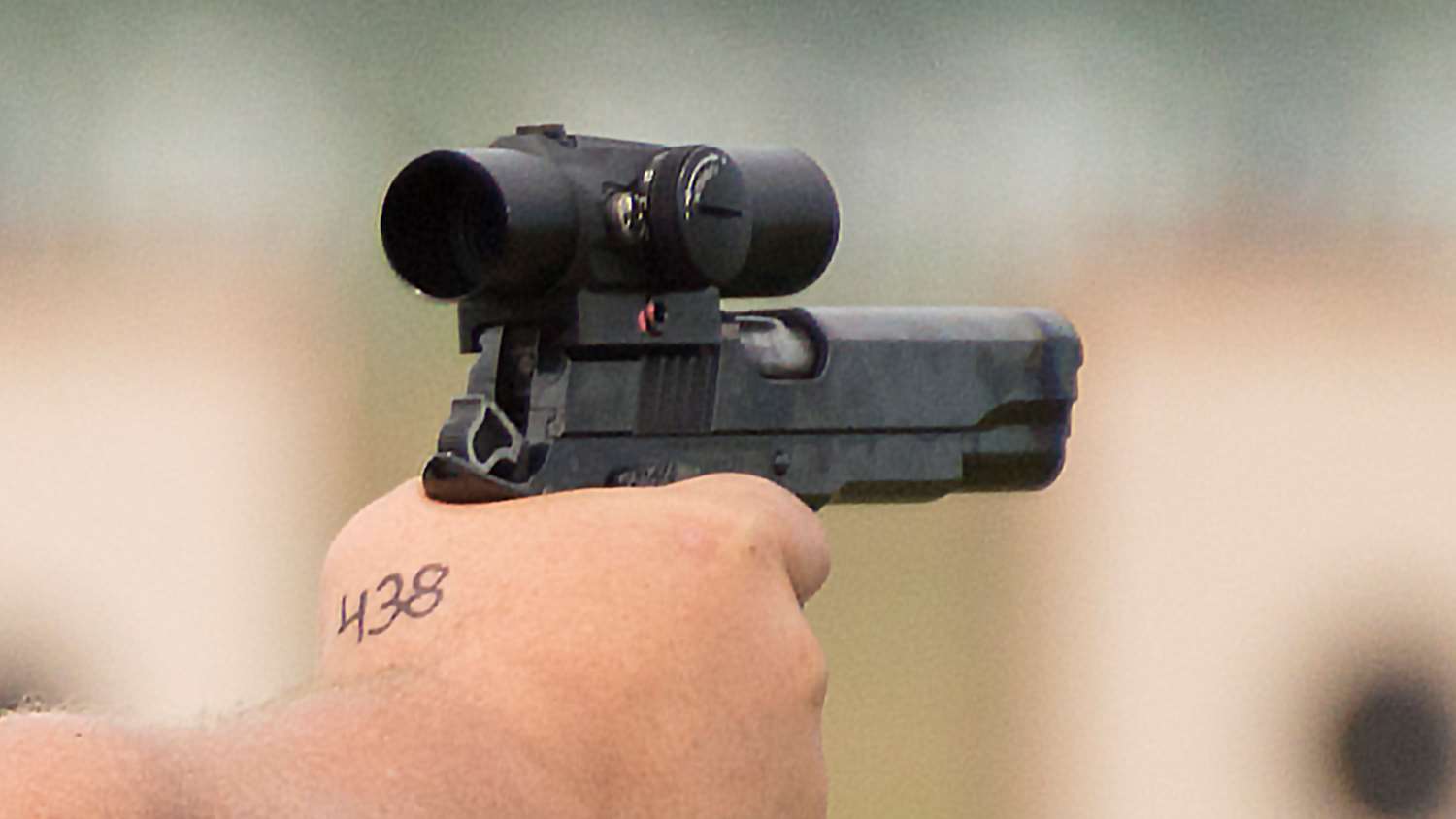
For me, I find that when looking at the target I accept the wobble of the dot more and do not get hung up on the trigger. NOTE: If you have a big wobble area this is harder to achieve. There are days that my dot may not sit as still as I like and on said days I will bring my focus back to the dot. If you have a decent hold you should be able to do this successfully. And if you have a big wobble, the true method of looking at the dot is great. Remember, that is how I learned to shoot.
Does your dot need to stay centered?
Another question is does the dot need to stay centered in the scope? The answer to that is a great big maybe. First of all, we humans like to see things correct geometrically. What I mean is we like to see a circle in a circle in a circle. If we had change sitting on our desk at some point or another we are going to stack it in the following order: quarter, nickel, penny and then dime. If you stack another way that just means you are little more creative than the average bear and good on you. It makes sense to put the dot in the center of the scope.
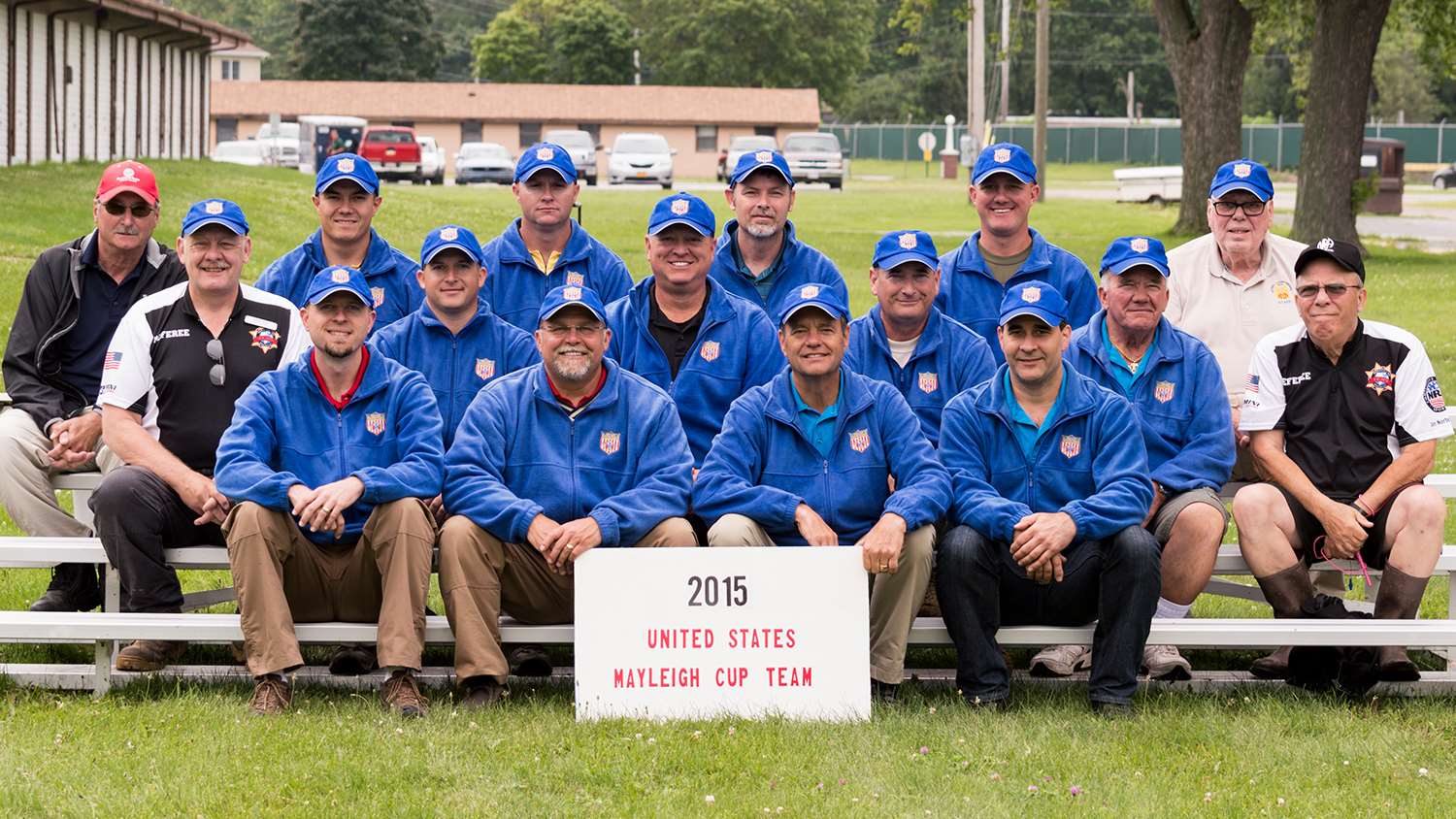
Anticipation … everybody does it
Yes, everybody. In some form or another practically every bad shot that was not a grip or position issue was a form of anticipation. Jerking the trigger is in essence anticipation, bucking, heeling and flinching. All of these are forms of anticipation.
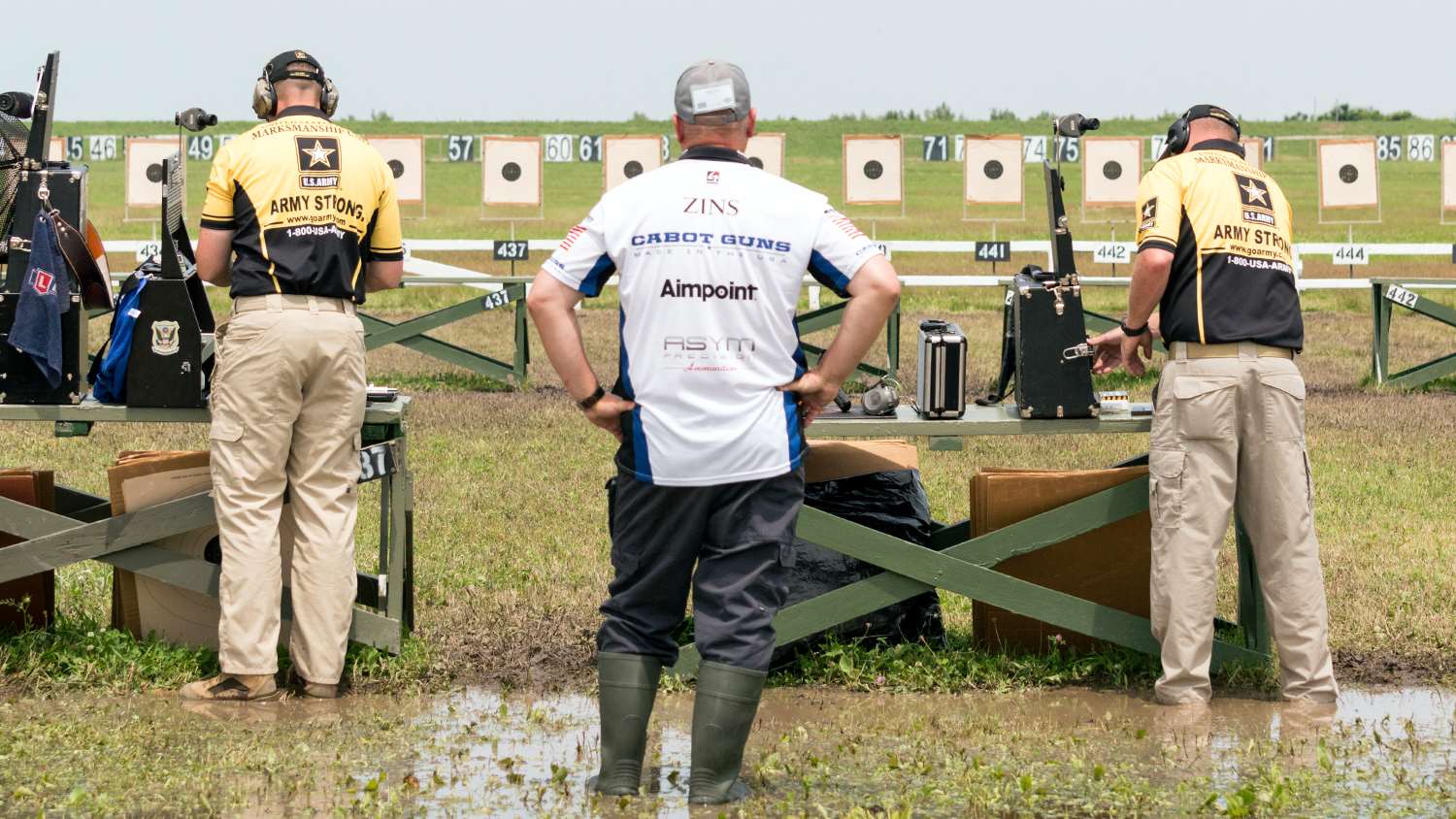
It doesn’t take long to figure out that if you are jerking the trigger, heeling, flinching, bucking or closing your eyes and you are aware of it, that obviously you aren’t doing it on purpose. So how do you stop? That’s where we seem to lose a lot of coaches—they can identify problems, but cannot fix them.
Imagine this hypothetical scenario: Your mechanic tells you the Flux Capacitor on your car is broken. However, the mechanic admits that he doesn’t know where it is, or even how to fix it—if he could find it. Would you go back to that mechanic?
The Shot Process
There is a solution to identify a lot of these problems prior to them becoming shots in places we don’t want them to be. Welcome the Shot Process into your life. Get to know it and make it your own little Shot Process and raise it however you see fit. After all, it is your Shot Process to cultivate and modify as you wish. If only children were that easy, but what fun would that be?
The Shot Process is your mental plan and checklist that ensures you are doing everything the same every time in order to shoot 10s. Everyone has shot a 10 at some point. A 10 that you shoot is no different than a 10 that Jimmy Henderson, Steve Reiter, Phil Hemphill or myself shoots. The difference is that we shoot more 10s because we have a routine that we follow every time the gun leaves the bench.
A lot of good shooters that took a long time to get good may not believe this. They may say they never developed a Shot Process, and they are just good. Well, the fact of the matter is that they did develop a routine and process over time, without really knowing it. What you need to do is actively develop that plan. Why would you wait and allow it to happen over thousands and thousands of rounds, when you can be in control of the development and tweak the plan as you need?
I have heard good shooters describe their Shot Process as, “Pick gun up, shoot gun, put gun down.” While it is frustrating to hear a good shooter say that, that is practically my Shot Process now. I have been developing this process for 20 years, and still working on it. In the beginning, my Shot Process was long. I was told to write down everything I did in order to shoot one 10—from the time I put the gun on the bench, until the gun went into recoil. Just the part from loading the gun until the gun went bang filled one side of paper.
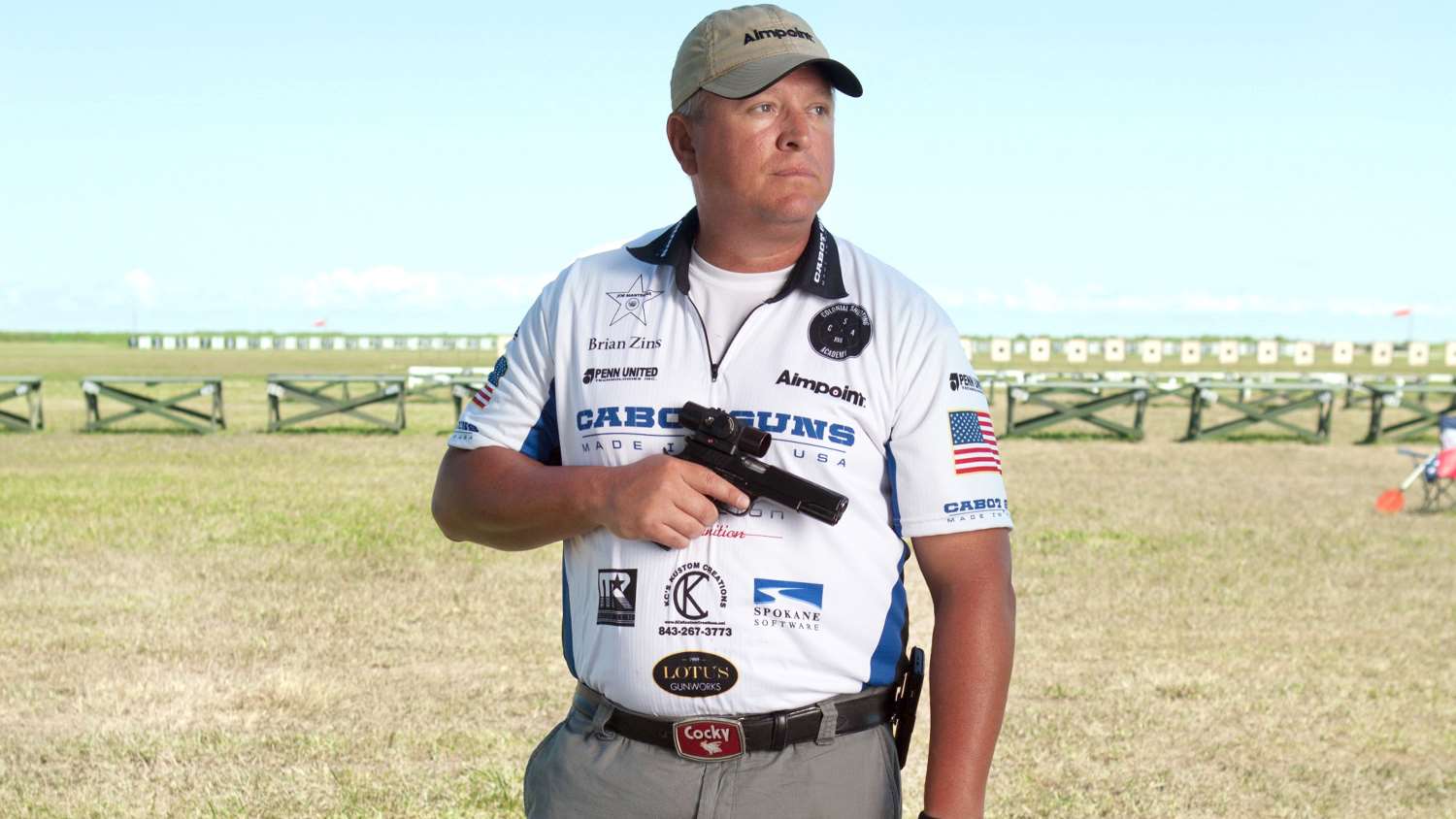
What are you looking at? Irons, the dot, the target if shooting a dot maybe? Do you talk to yourself as the gun comes up? What do you say? Is it a phrase or key word? Is it the same thing for all three stages of fire? It really should be, or at least really close. What is your visual focus on as the gun is raised? Are you looking at the front sight or are you looking at the firing pin?
Did you straighten your arm prior to raising the gun or did you just hap-hazzardly throw it up in the direction of the target? When the gun settled in the aiming area, was it acceptable—or did you just figure you could move your arm at the shoulder, or adjust the gun in your grip to get the sights where you want them to be? Was the grip proper when you dry fired—or did you screw it up when you chambered a round?
All of these questions and more need to be addressed in your Shot Process.
The best way to learn this process is to have a partner write down everything you do and are thinking—that way you do not take any short cuts. That is the easy part if you are honest with yourself and actually write down everything you do to shoot one well aimed shot. The hard part is following that process and being able to identify when you are not, or identify problems in the process and abort the shot in slow fire or fix it, expediently, in timed and rapid fire. You have to be aware of all these steps, be honest with yourself, stop—and fix them. If you think in slow fire you can muscle through an indicator, and still make a good shot—then I am here to tell you that if it does end up being a good shot, you were lucky. I can’t tell you how many times I thought, “I can still shoot this and make it a 10.” Almost every time I didn’t shoot a 100 slow fire, there was that shot.
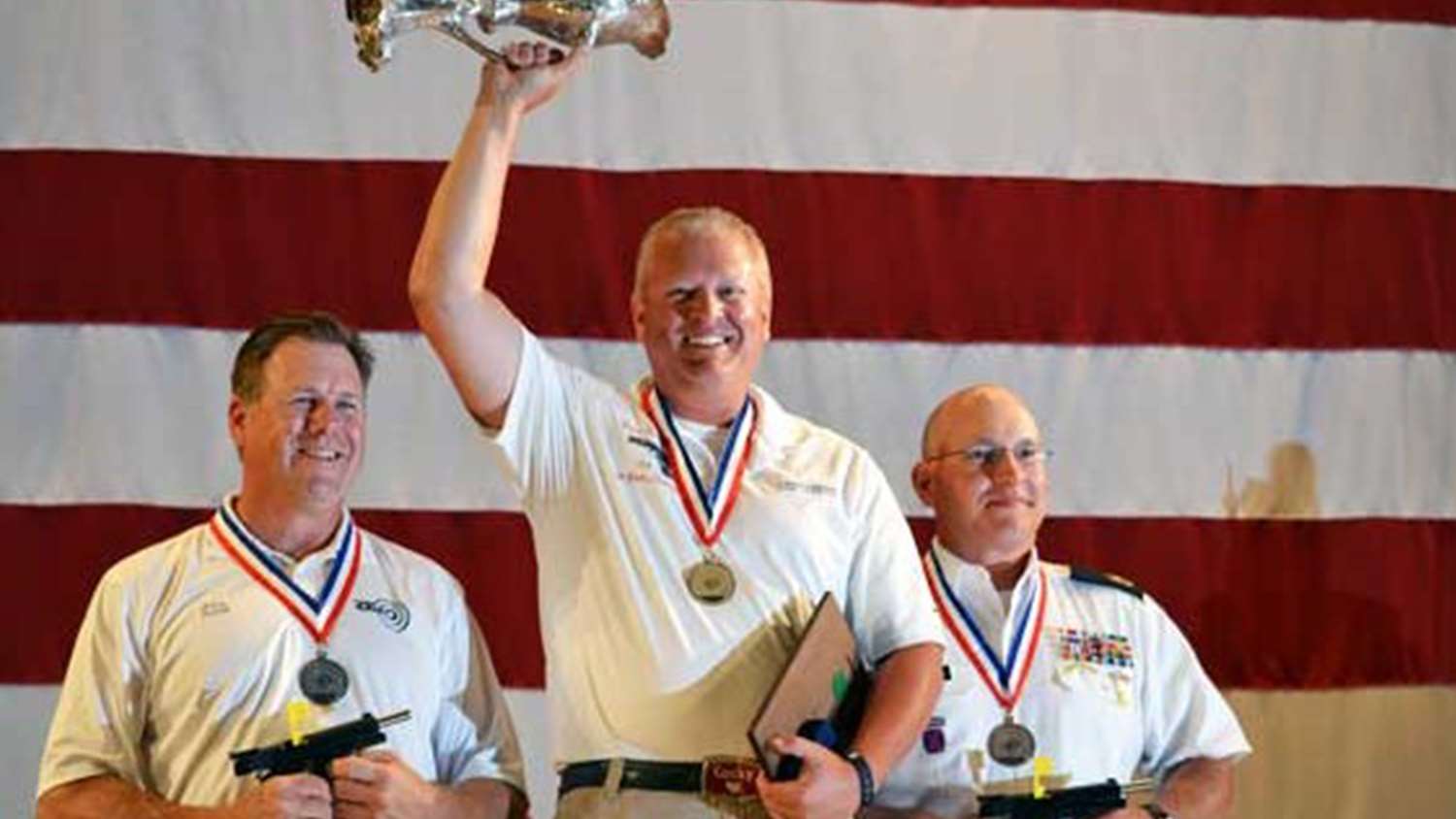
Remember your training partner that helped write down your process? Now, use them to ensure that you are in fact following the process that you developed. Eventually, they will become subconscious acts. You will not have to ask yourself all these questions before each slow fire shot and each string of timed and rapid fire, your process will take over and you will automatically be able to identify the imperfections in all the steps and nuances of your process—without asking yourself the questions. Perhaps you will even reach the, “pick gun up, shoot gun, put gun down” Shot Process. Therefore, by utilizing proper trigger control and aiming, and by following the Shot Process that you have developed for yourself, you can eliminate a lot of issues, including anticipation.













